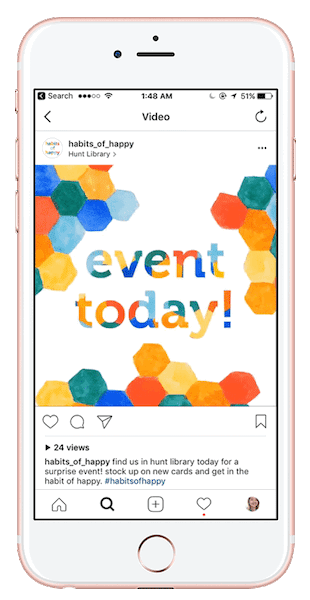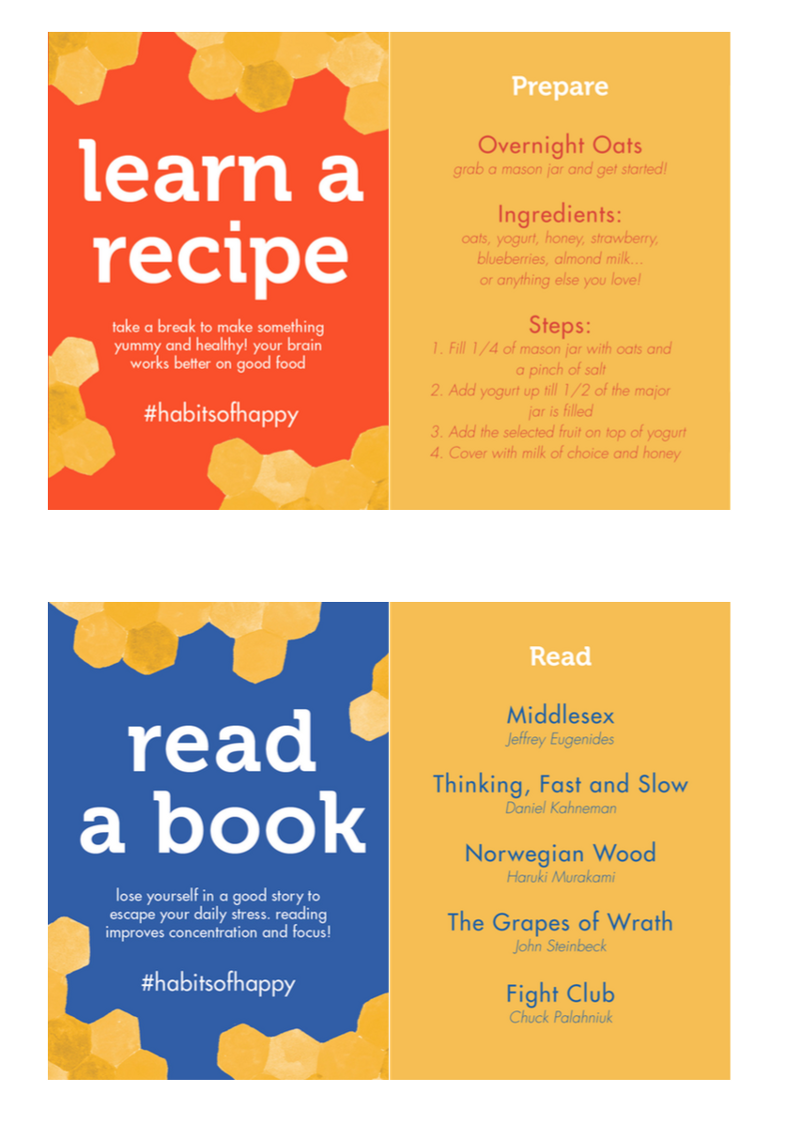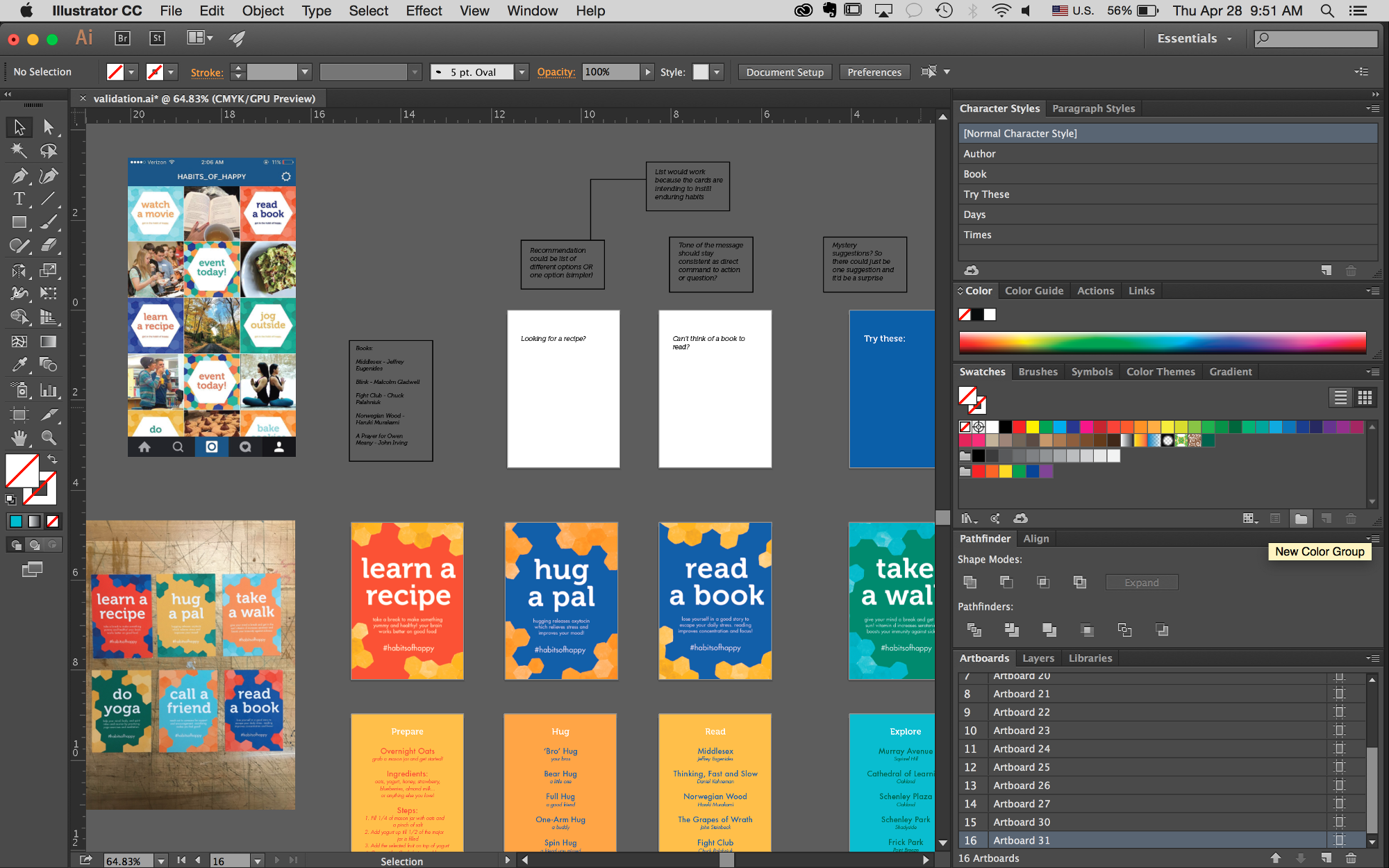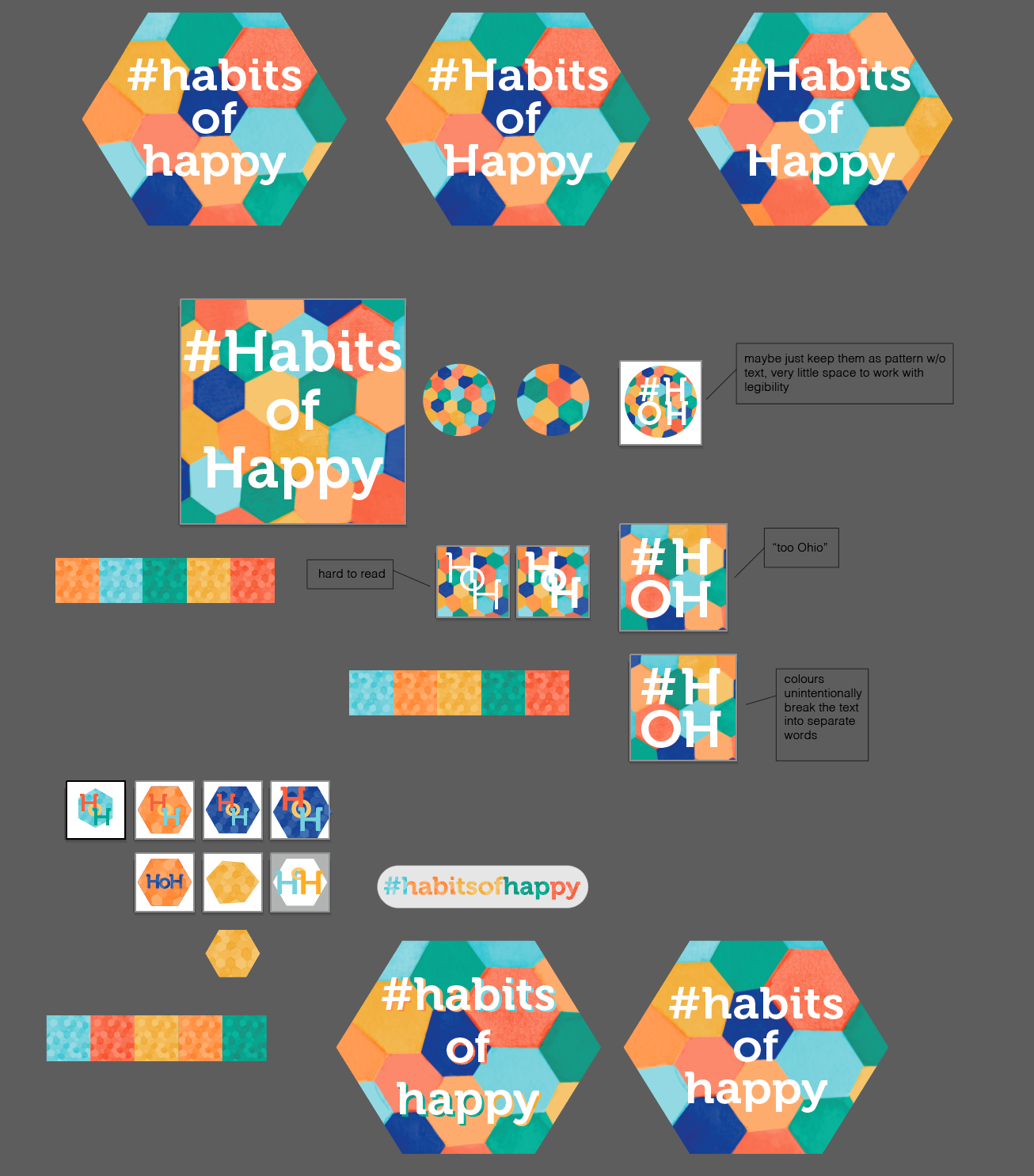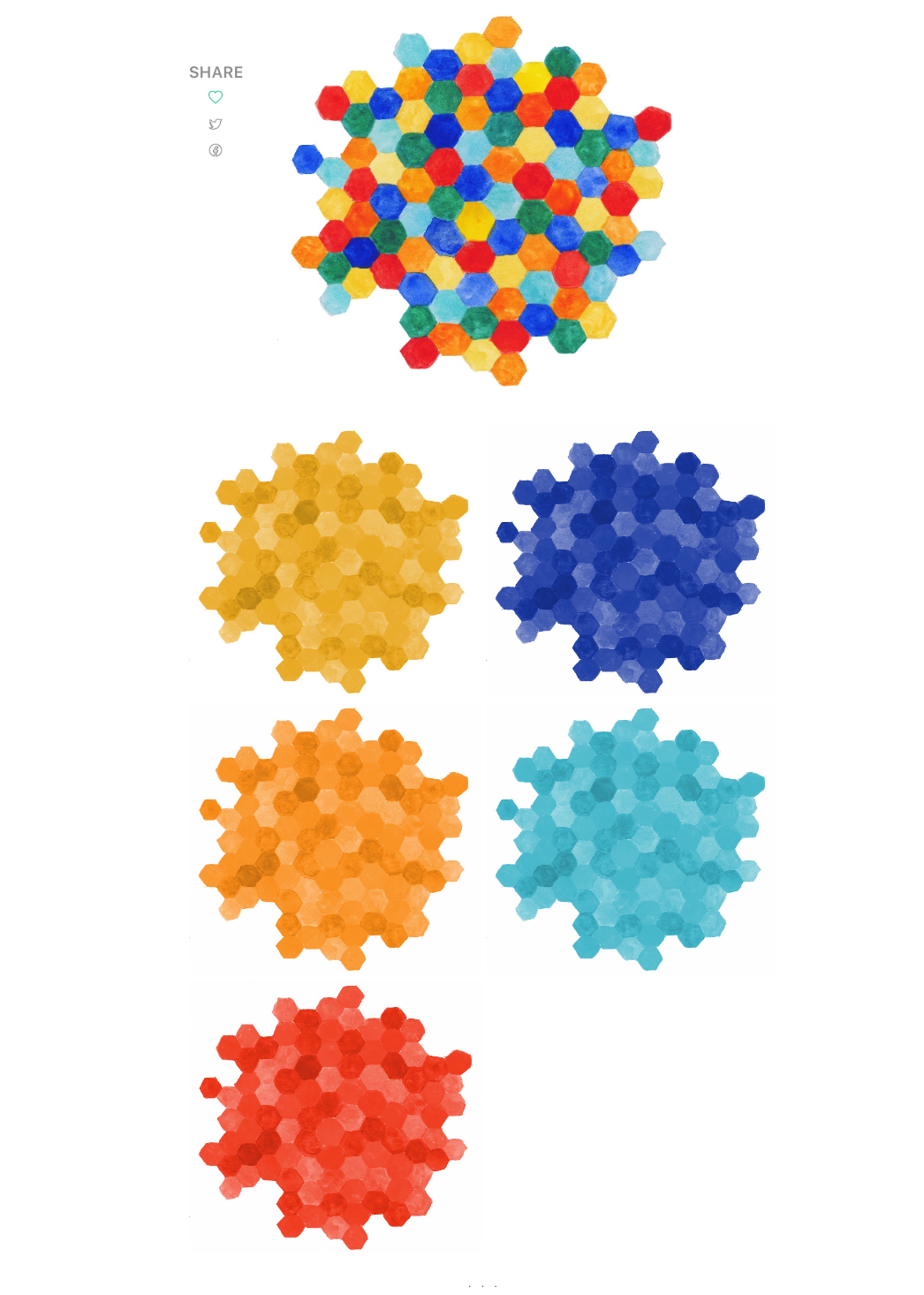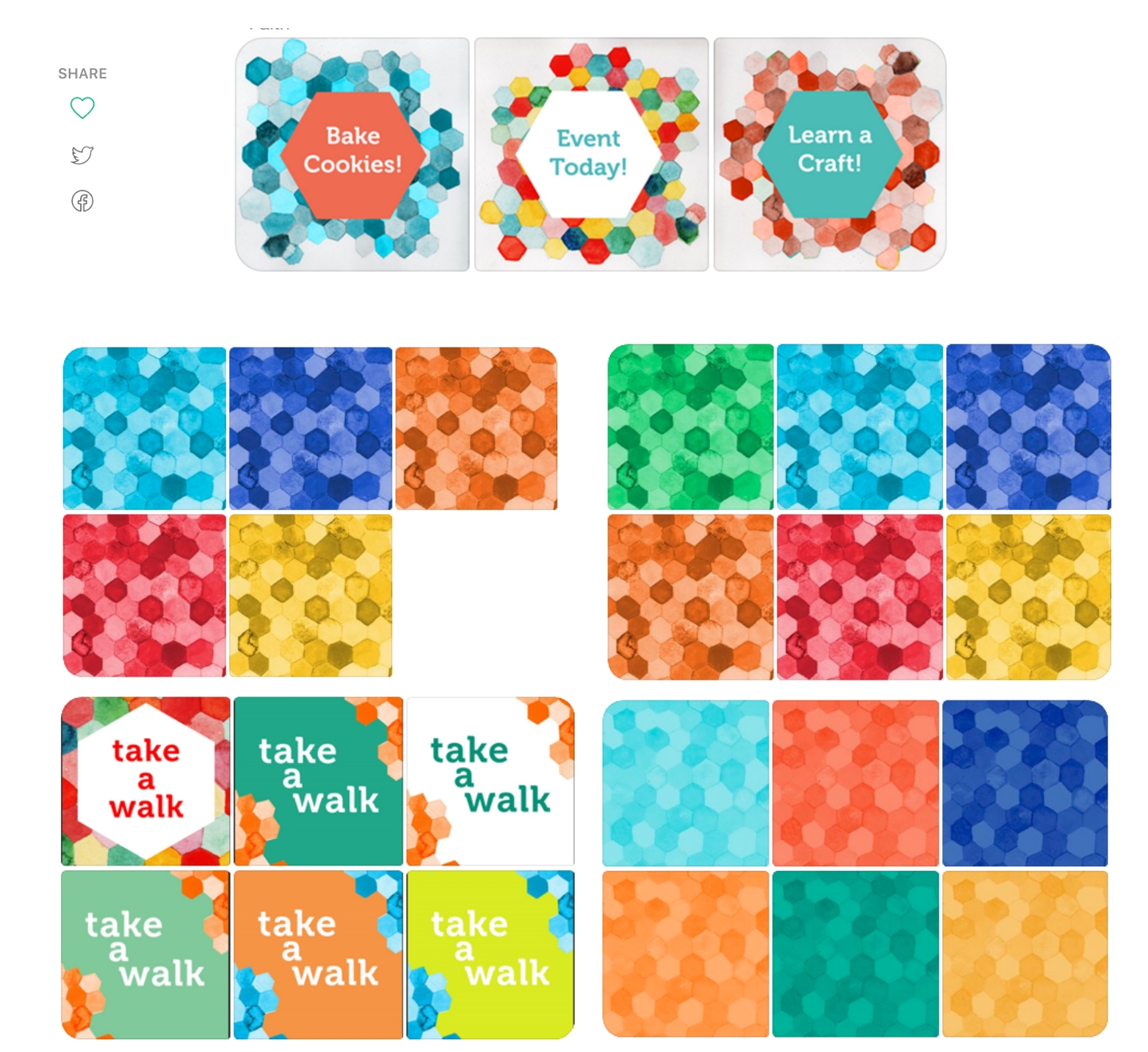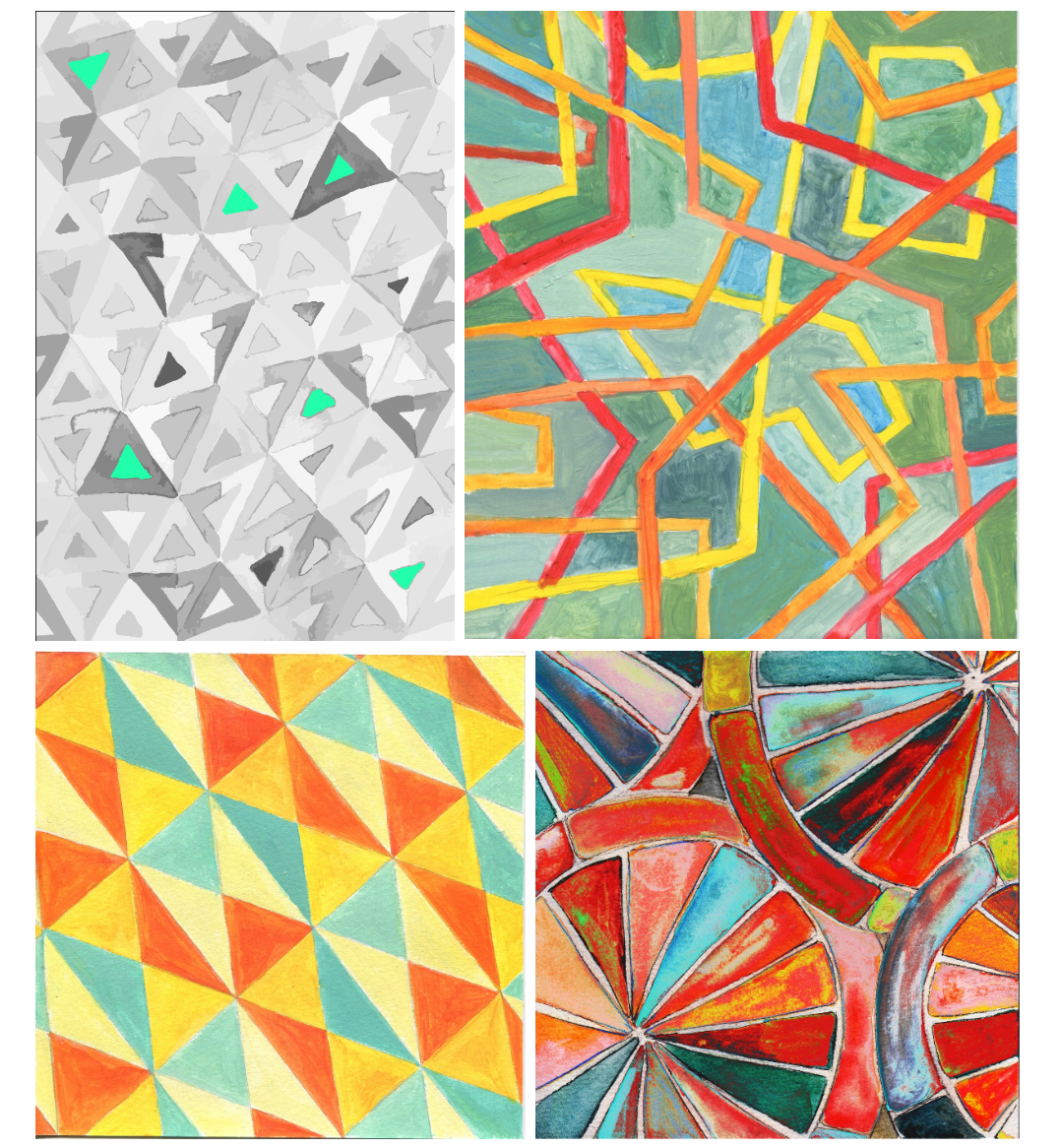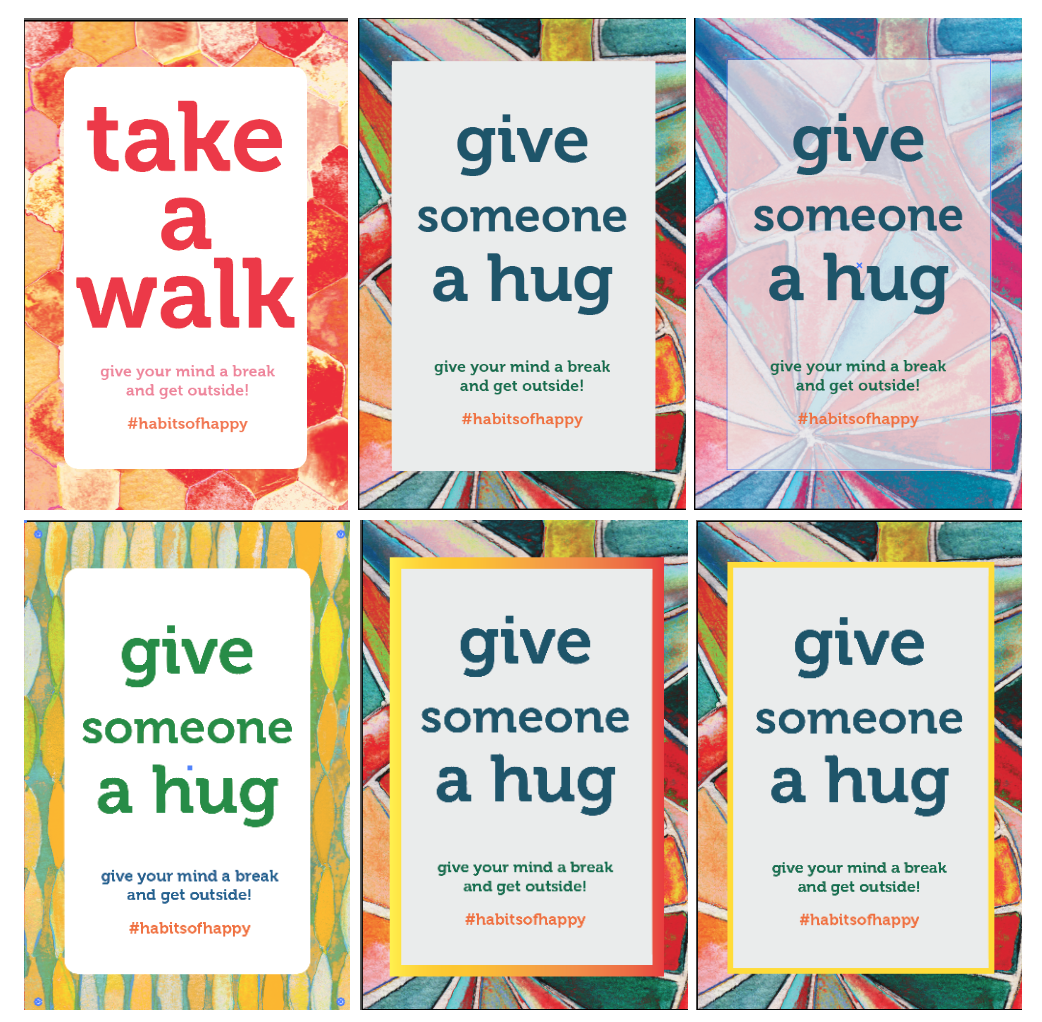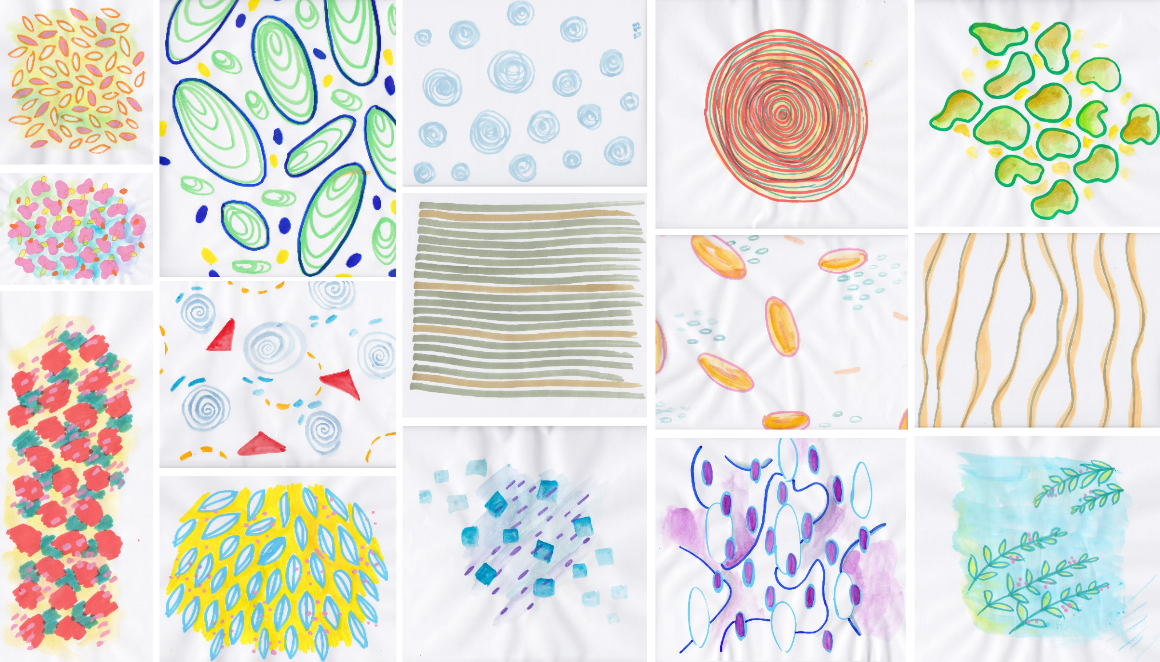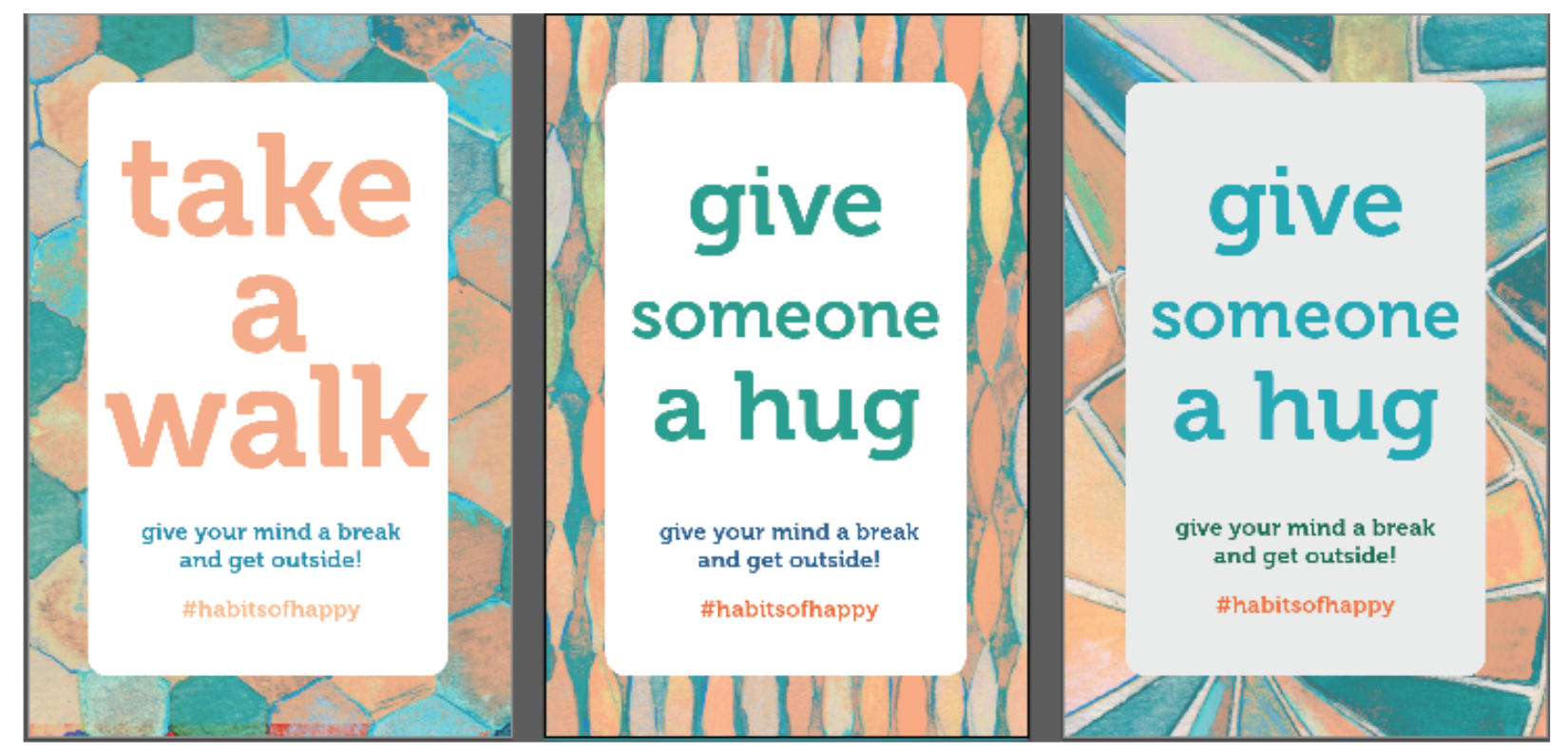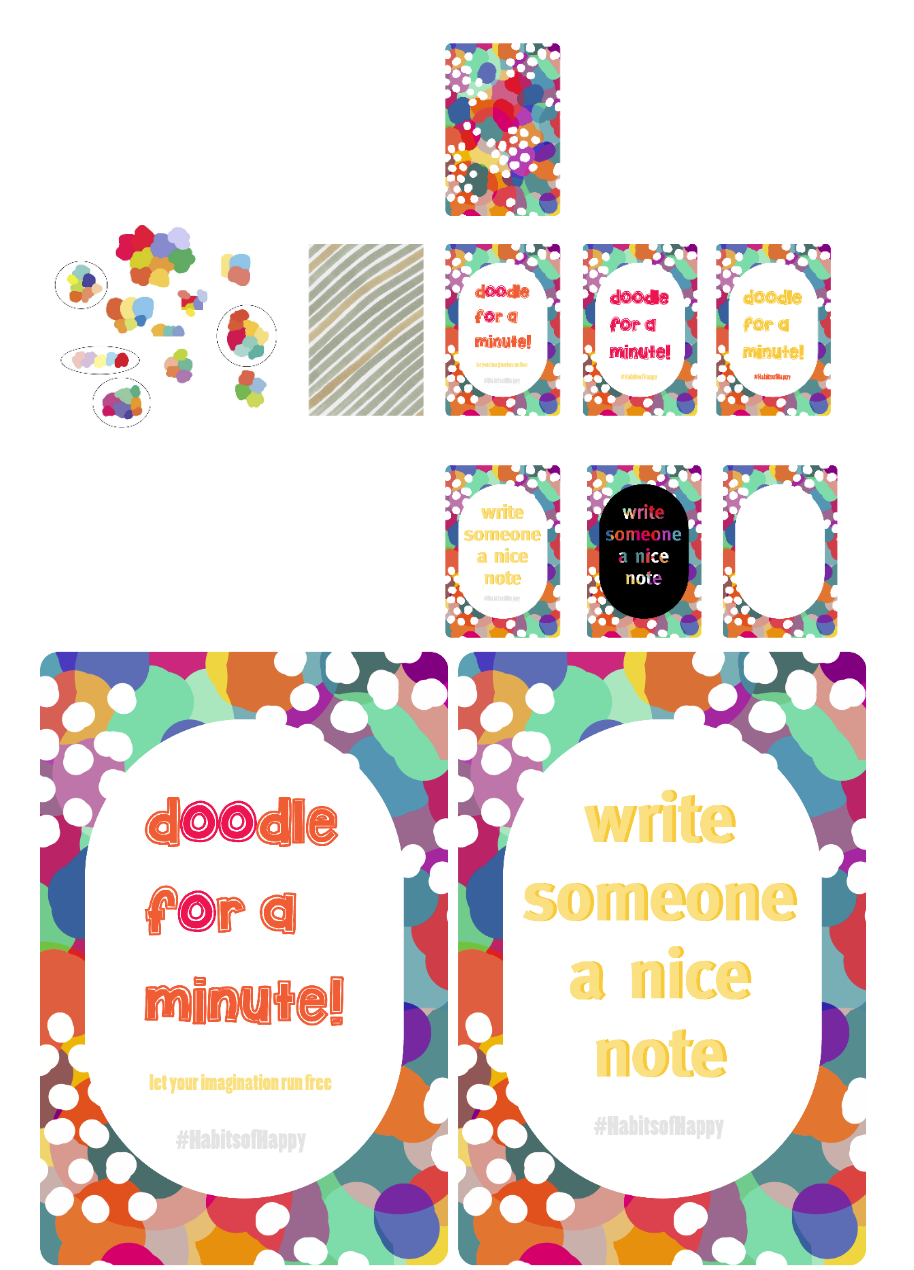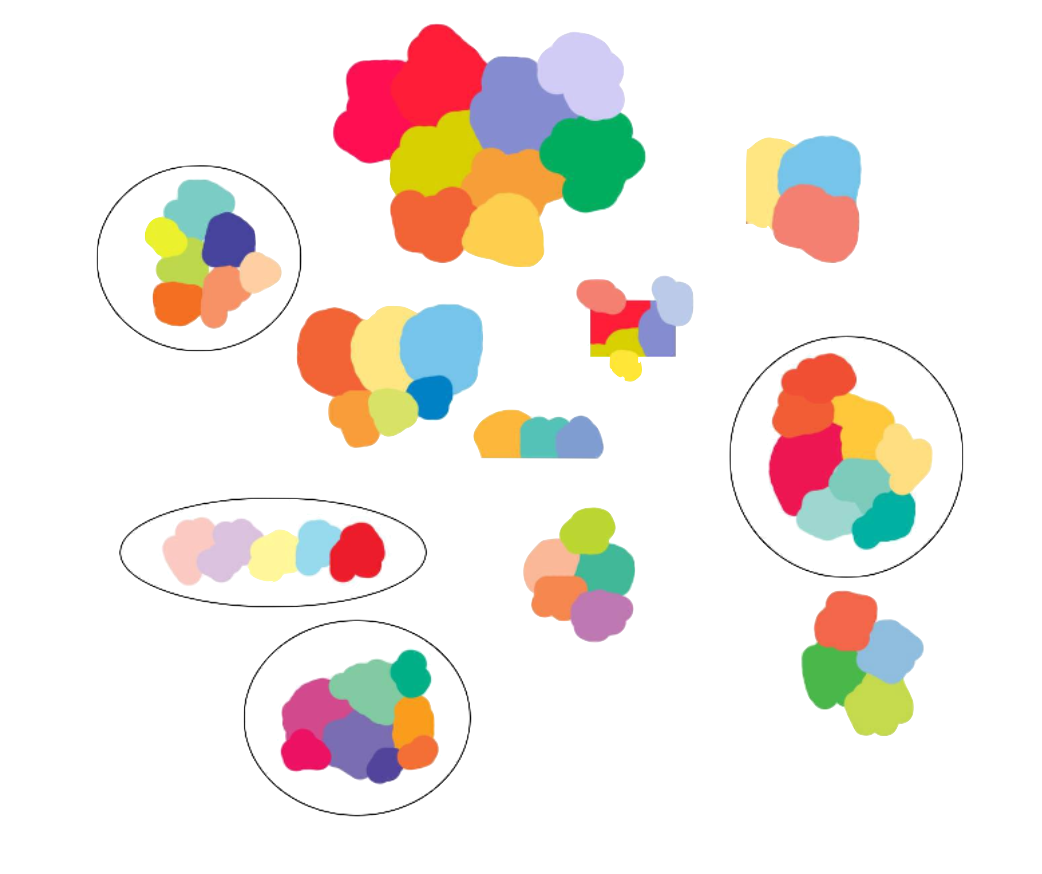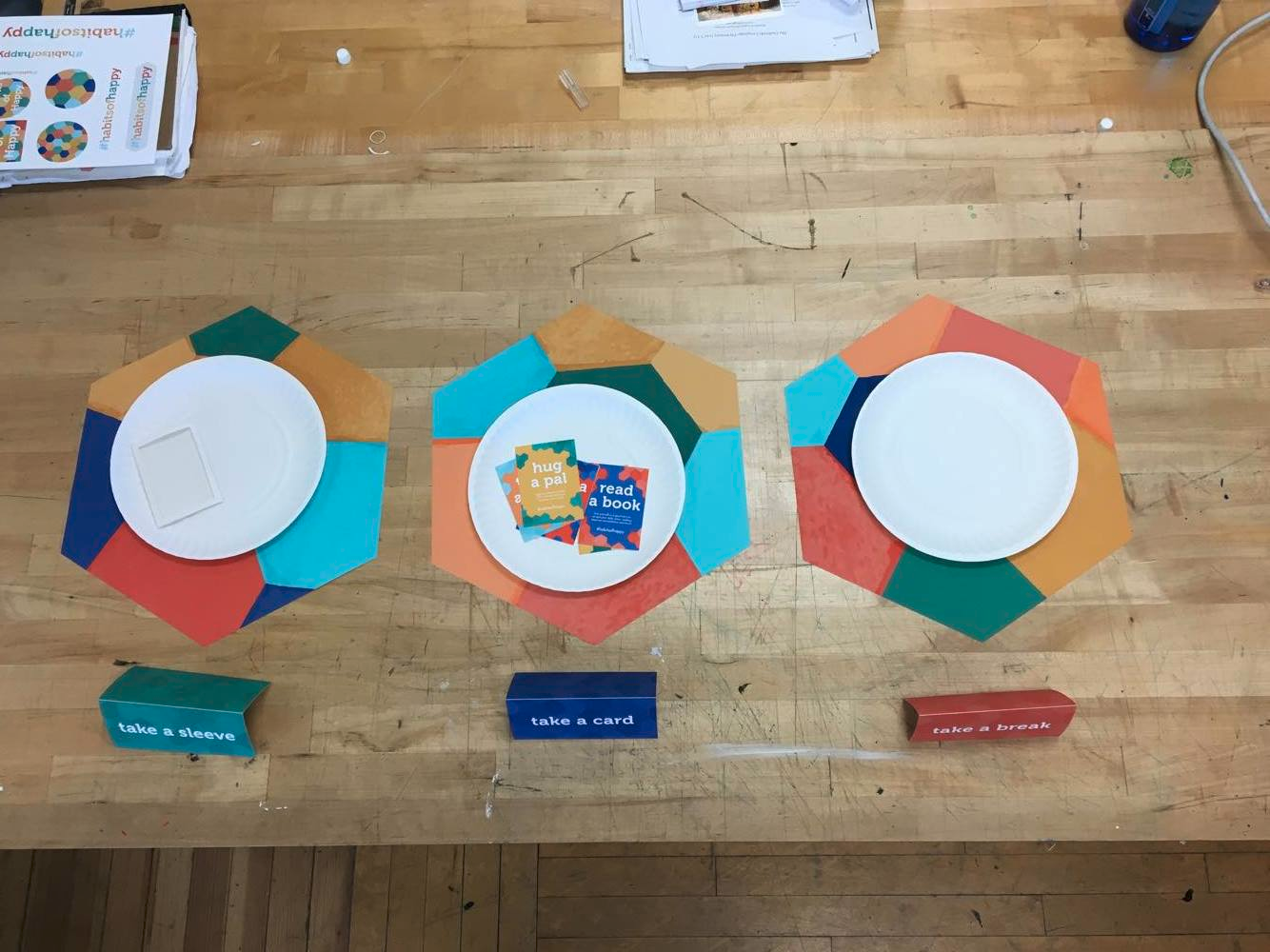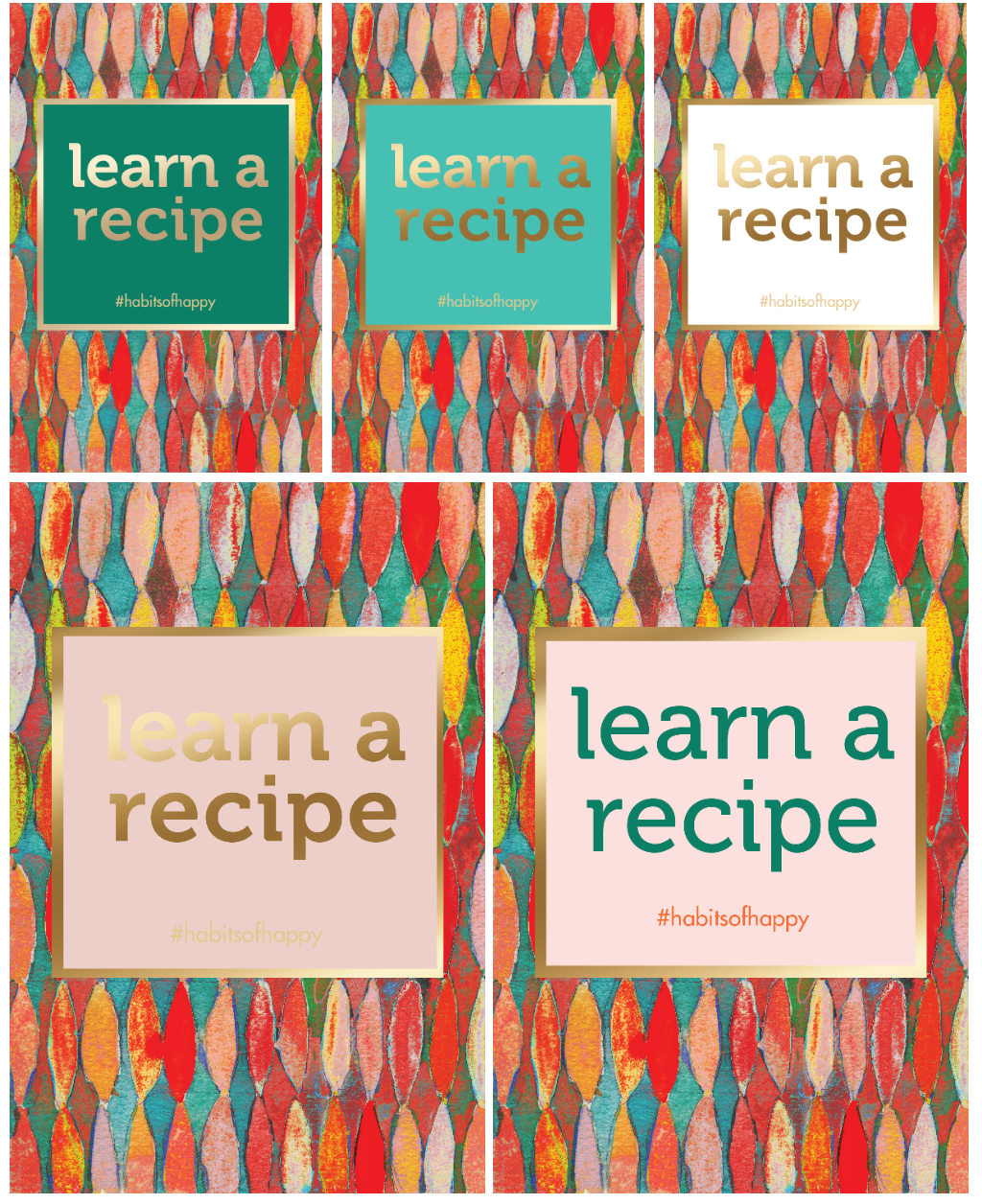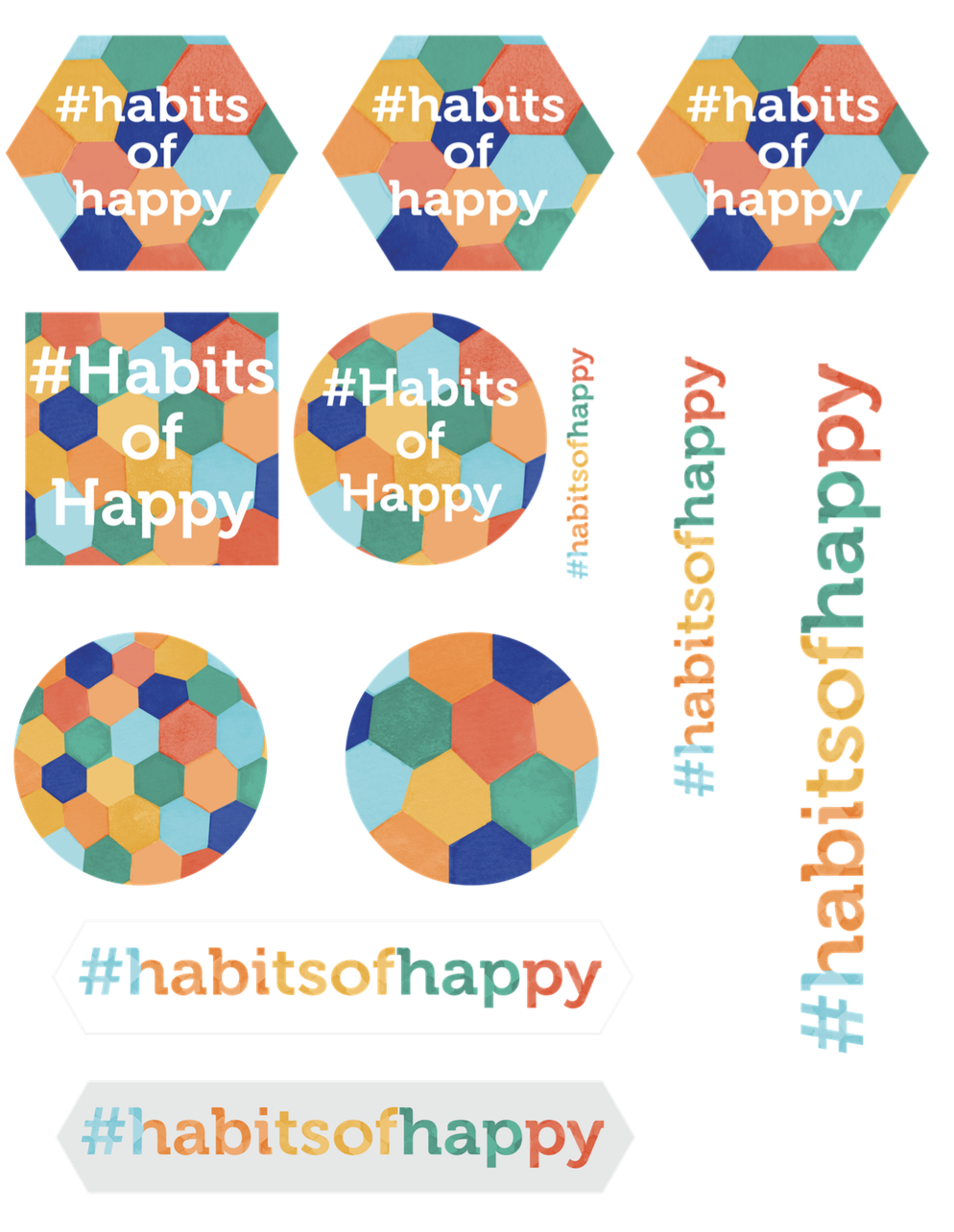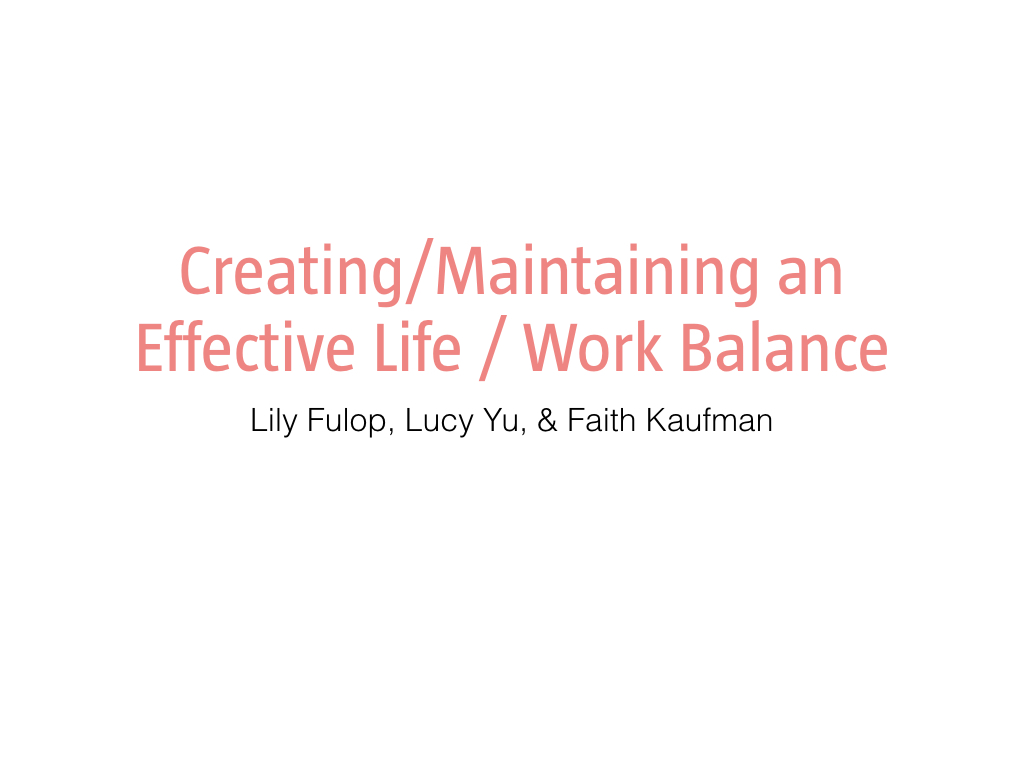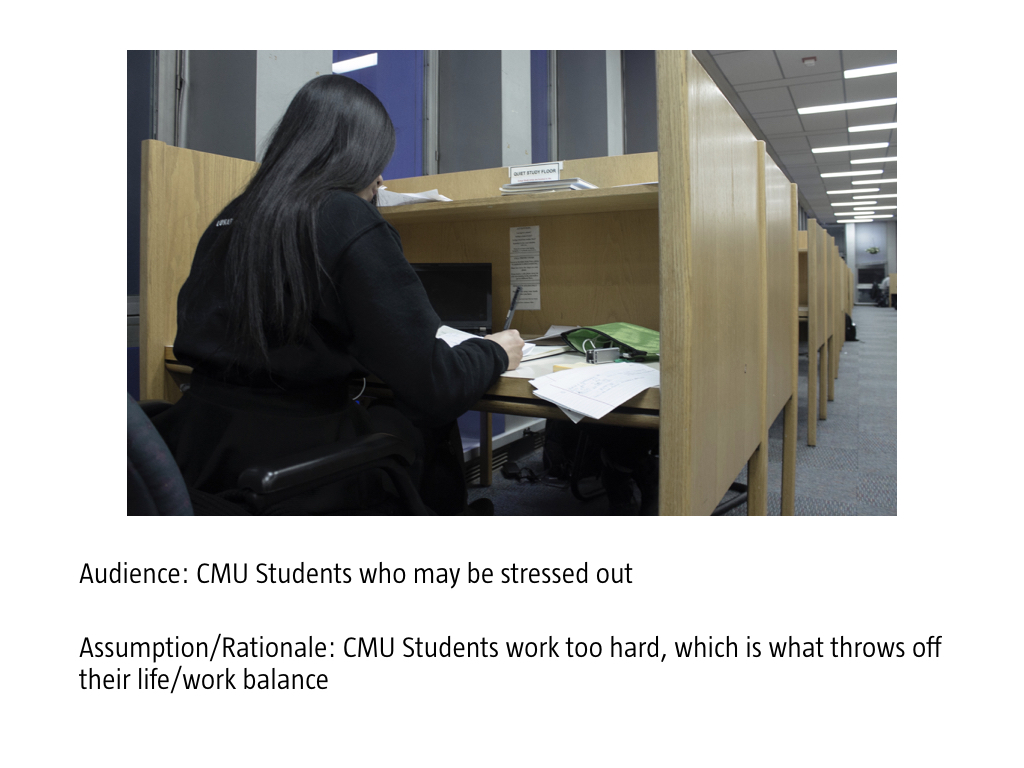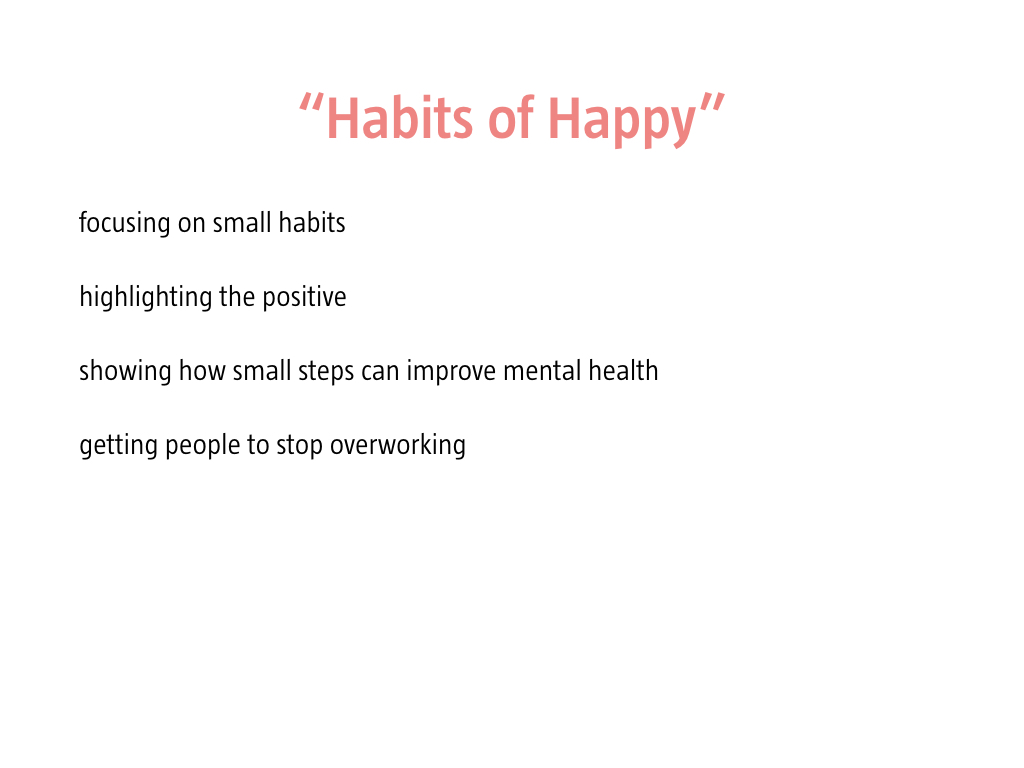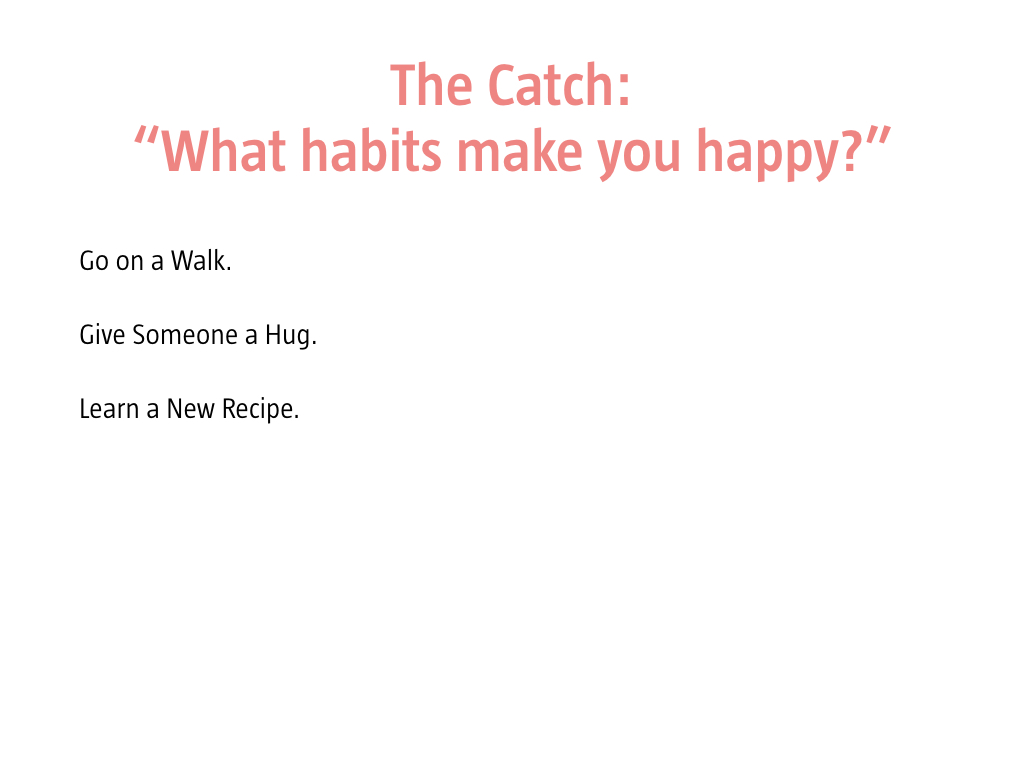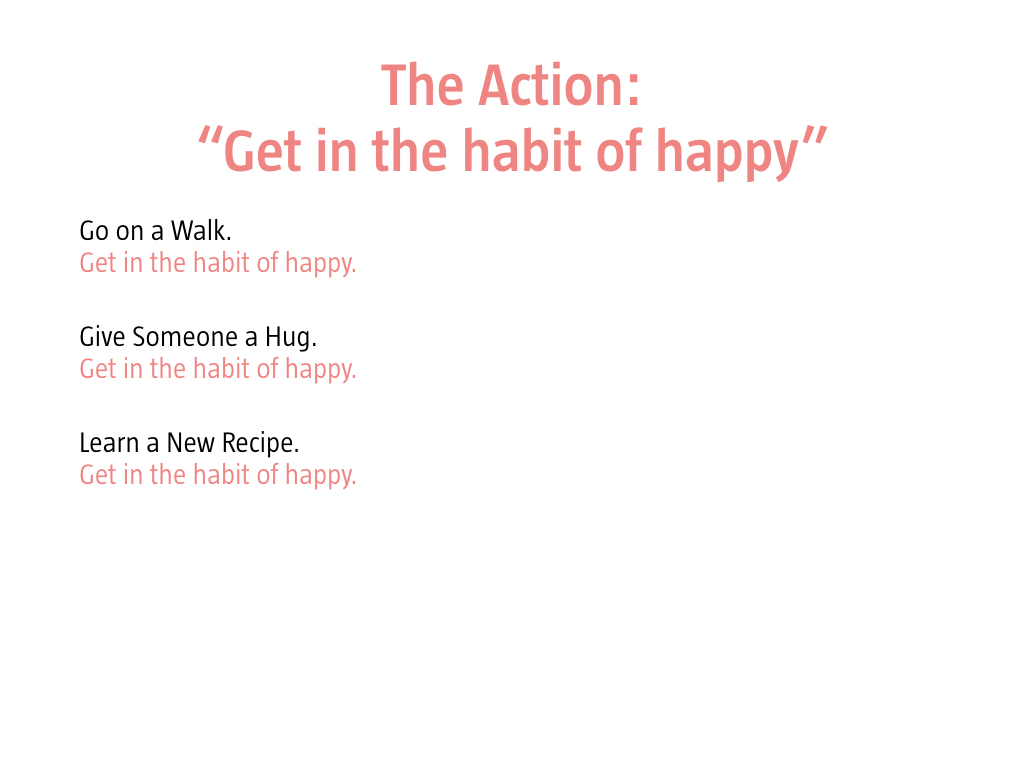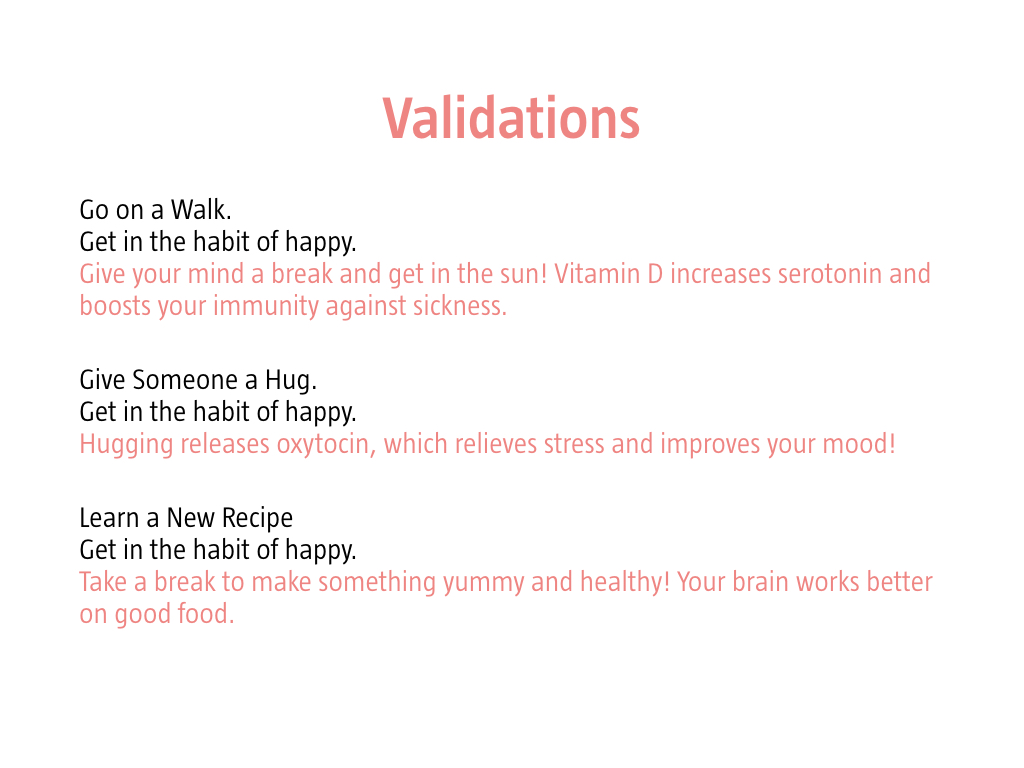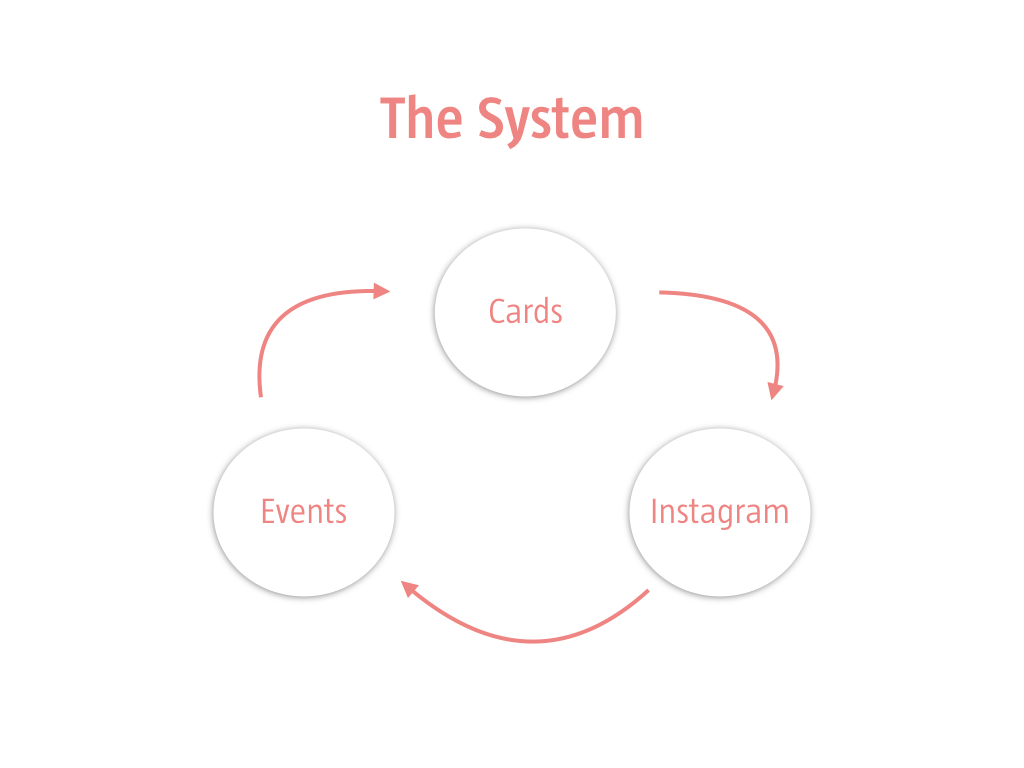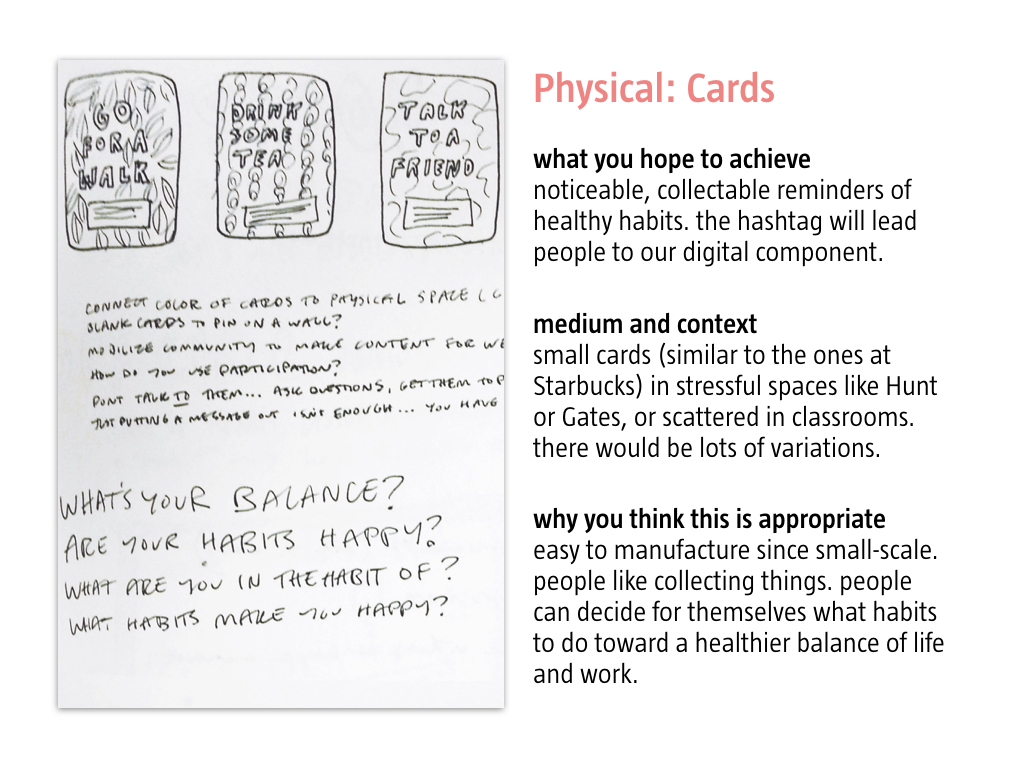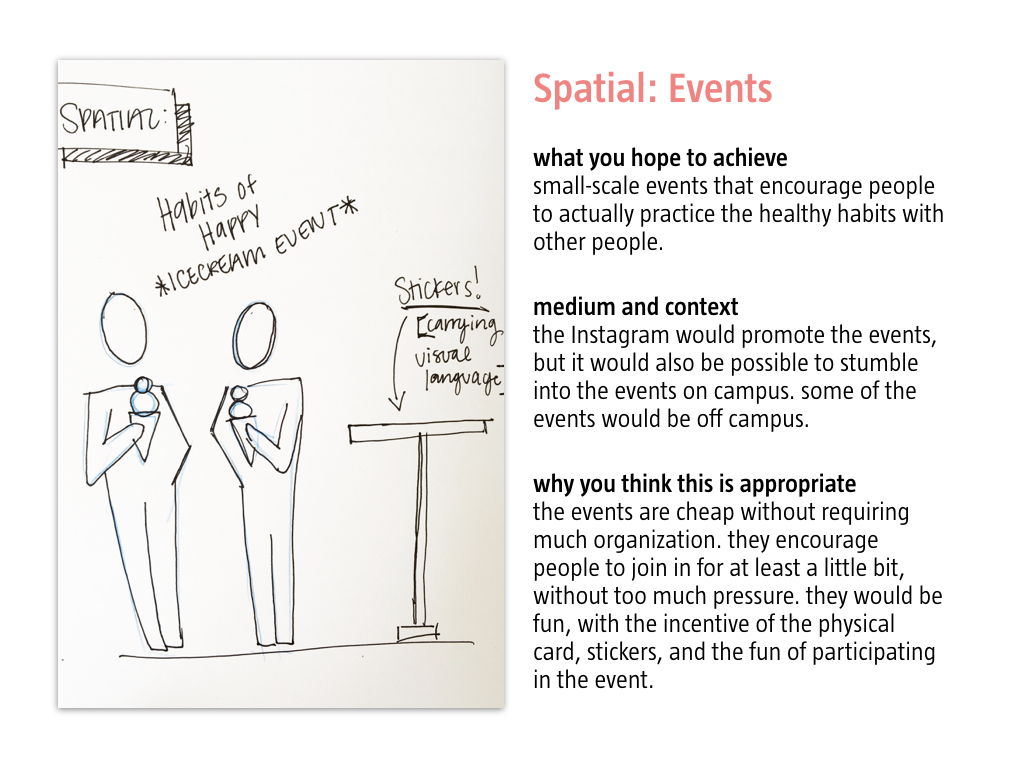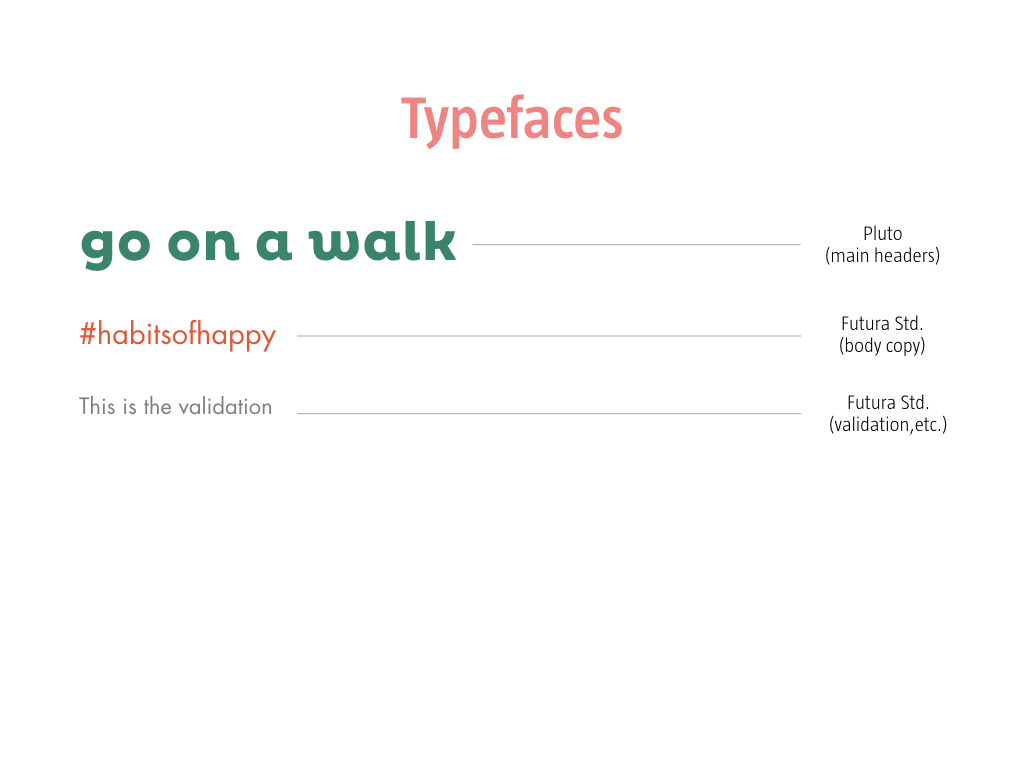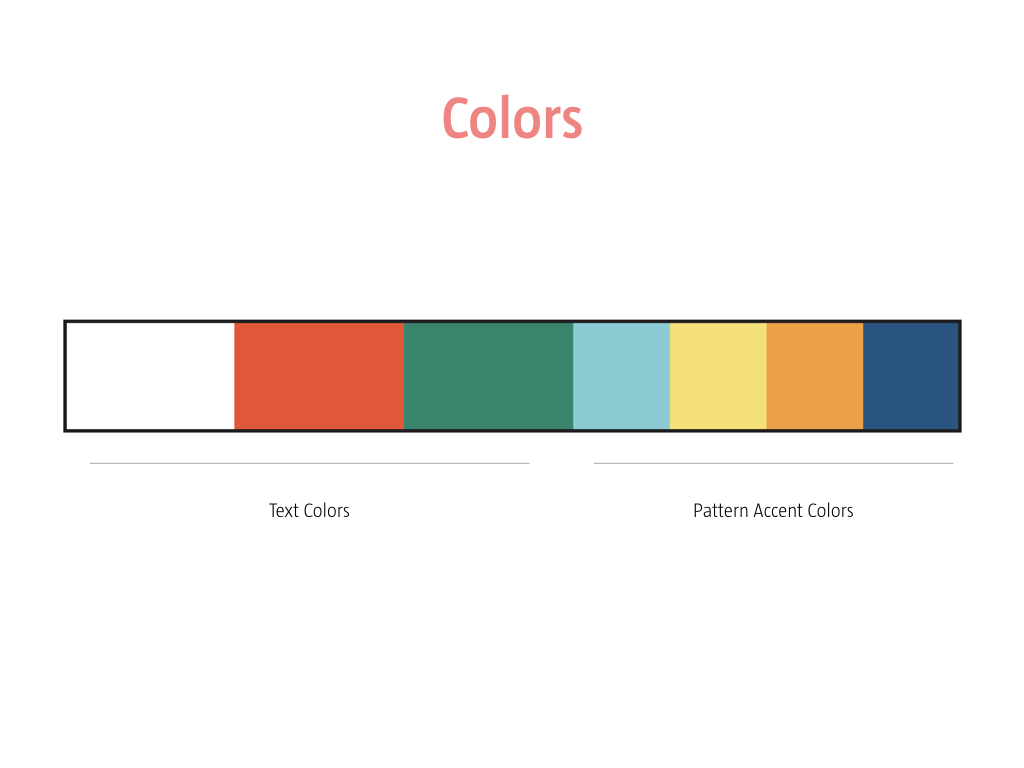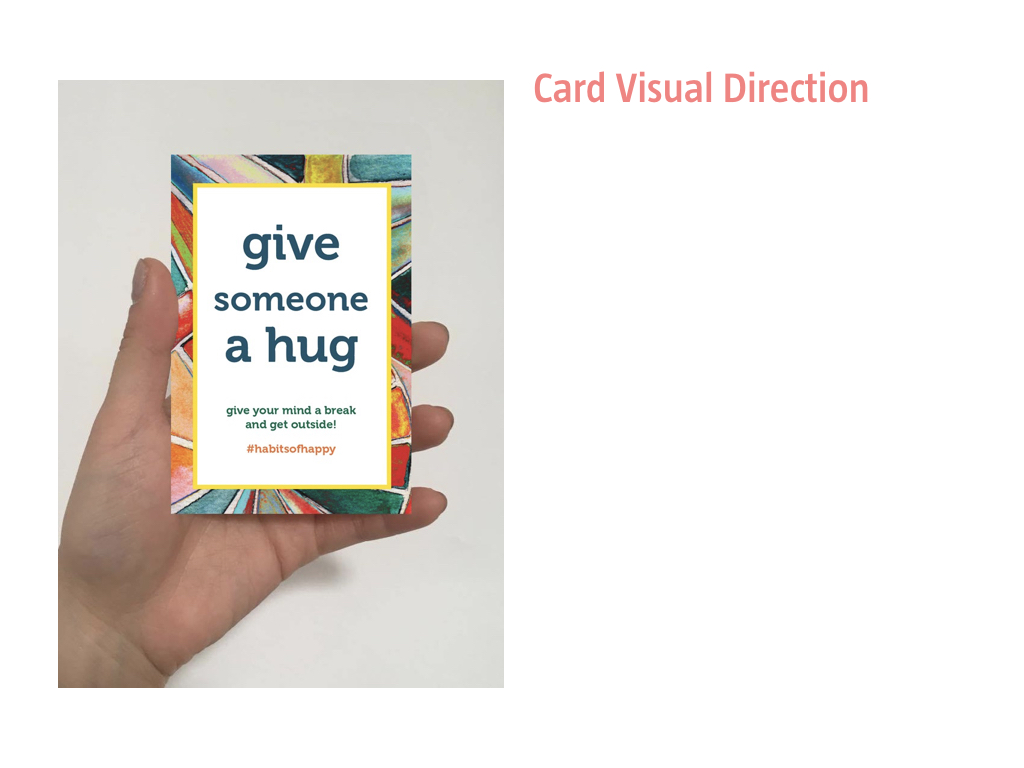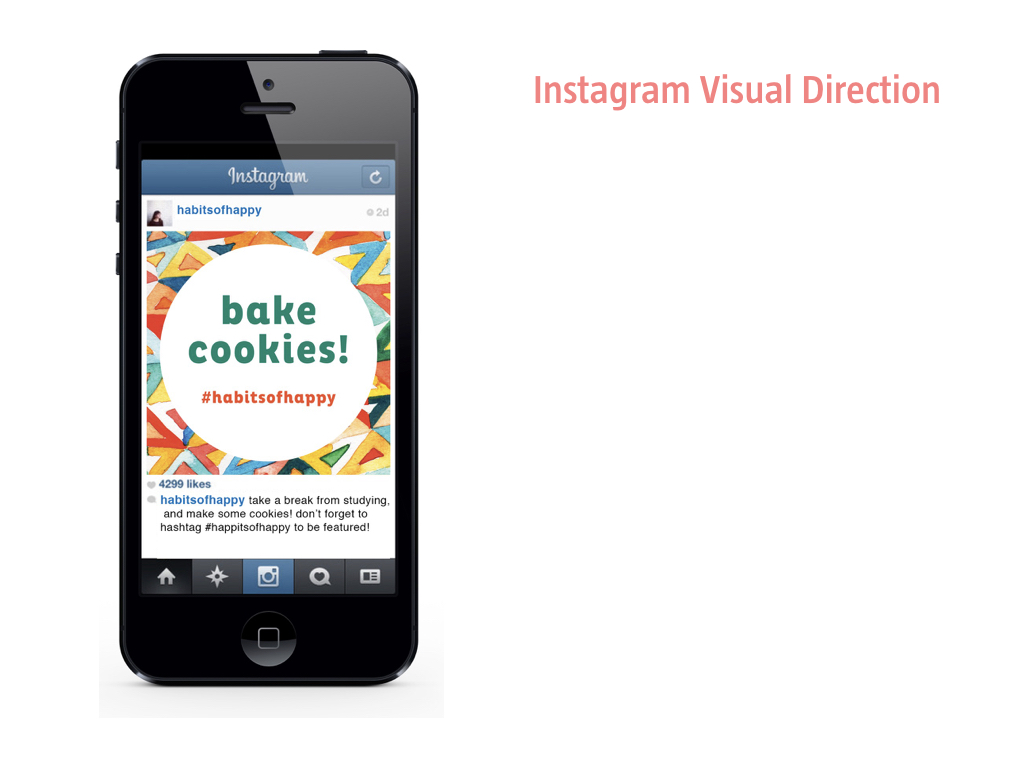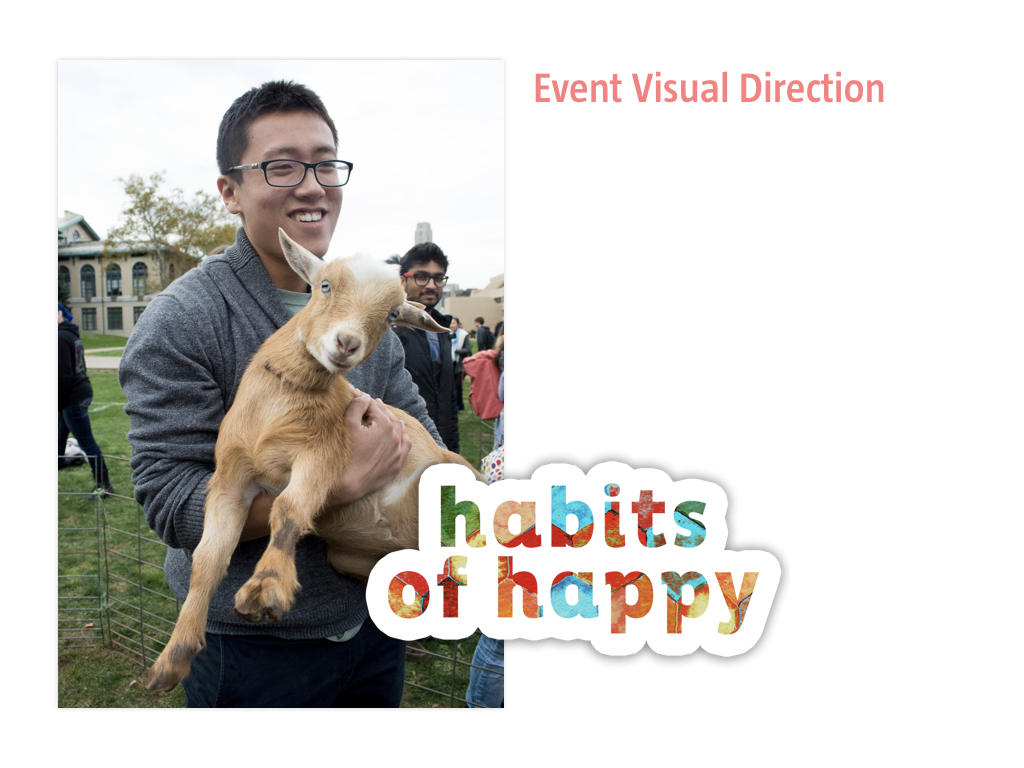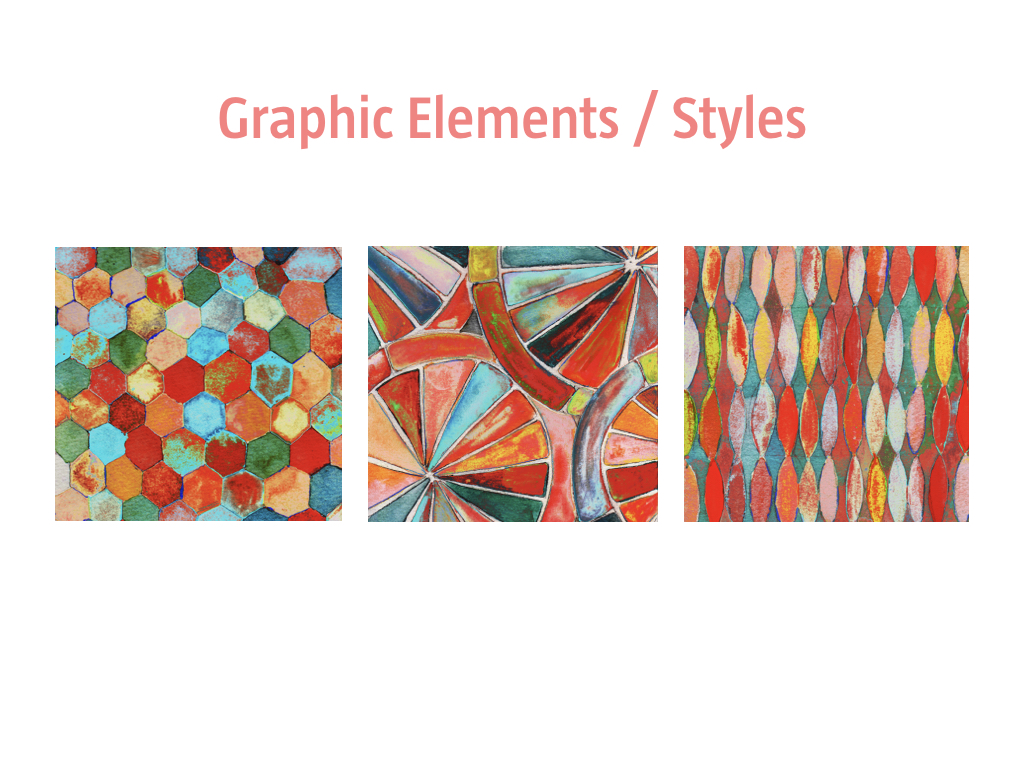Habits of Happy
systems thinking · branding · visual design
"How can we create and maintain an effective work/life balance?"
—
Faith Kaufman, Lily Fulop and I were brought together by this project based on common interest in the challenge to “create/maintain effective work/life balance”. This topic has great personal pertinence, but is just as relevant in the broader scope of CMU, where stress culture is highly prevalent. As a side note, after two days into our project, we were alerted by the school that two CMU students had committed suicide, from causes likely relating to work load. This increased the significance and urgency of our mission to figure out a way for students to implement a healthier work/life balance. We created a system comprises 3 pieces: a physical, a digital, and a spatial, which seek to inform, engage the target audience, and provide for them a call to action.
The goal is for the system to slowly become adapted as a habit in people's routines so that they would develop their own mental cues to take breaks.
THE SYSTEM
—
Collectible Cards — physical
The set of cards include action prompts that encourage people to take a break - be it calling a friend, reading a book, or various other short, low-commitment activities. They state a simple validation on why it's important to take a break, gently intervening in the usual long working hours. On the flip side of the cards, there are lists of specific suggestions of ways to put the prompt on the front into action. For example, for "take a walk," the back of the card includes a list of places that are nice to take a stroll around.
Instagram @habits_of_happy — digital
habits_of_happy's Instagram would be updated every time there's about to be an event - it would be used as a medium to publicize events and feature participants, increasing interaction and positive behaviors.
Pop-Up Activities — spatial
In different spaces on campus - especially those deemed very stressful - Habits of Happy would set up a table with bowls containing short, low-commitment de-stressing activities that people can participate in.
RESEARCH
—
We interviewed people in the class with some questions to determine the scope and direction of our project.
Questions:
- Would you feel more comfortable with the administration or student-run organizations?
- How do you define happiness / how do you find fulfillment?
- What methods do you take to alleviate stress?
- If you are unable to find a good work / life balance, what’s preventing you from doing so?
- What engages you in a visual piece / what do you enjoy in a poster?
- Who do you perceive as the most stressed student group on campus?
- Where do you expect to see interesting posters?
General Findings:
- definition of happiness is personal; there is no one hard definition
- many people found peace/a sense of rest tied to their happiness
- their sense of fulfillment is attained through reaching goals
- goals changed / shaped by social atmosphere + gaining social acceptance
- feelings of guilt arise when spending personal time outside work
- consensus that student-run orgs are trusted more than admin
Affinity Diagramming
—
Drawing from our findings from the affinity diagramming, we focused our direction to finding balance between life and work, emphasizing the importance of having fun outside of work (moving away from stress culture).
VISUAL EXPLORATIONS
—
Mark-making
Early Iterations
Visual Direction Concept Slides
Visual Style Guide
REFLECTION
—
I really enjoyed working on this project with my team. The topic was particularly relevant given the timing and atmosphere of our campus. It really gave our project a boost in significance and urgency.
Developing a consistent visual system was quite difficult, as we started off with really female-directed patterns and had a hard time steering away. But as we progressed, and eventually settled on a gender neutral hexagon and a primary-heavy palette to tie our visual piece together, things started to fall into place. I learned how effective symbols and signs are in tying a system together — they’re quick and easy to recognize, and simple to tack onto existing pieces.
There were many considerations that we had to make in terms of scale, particularly for the physical and spatial pieces. The sleeves and cards took a bit of playing around with, as we had to ensure they were small enough to fit most phones, but also large enough to hold the content we included without compromising legibility.
We also learned to balance dynamic colors with white, and vice versa — to be bold with our saturated colors (not something I’m typically comfortable doing). Experimenting and trying things out — just making iteration after iteration with feedback — was a very effective way of testing whether something is working or not.
I'm very happy with how our system turned out in the end: the physical piece encouraged people to develop habits (long-term), the spatial piece granted immediate gratification (short-term) by providing a short break on the spot, and the digital piece tied together the two, while also encouraging the formation of long-term habits with Instagram reposts. Of course, as always, there are modifications that we could make to improve cohesion of the system, as well as taking in consideration of how these pieces would need to be managed if they were actually implemented, but I’m still really proud of our team for how far we’ve come!






